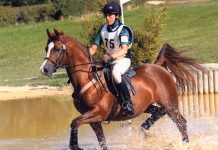Or focus on the journey to reach the destination?
It has been a busy start to the year for me – usually the winter months from December through to late February are somewhat quieter as the cold and icy conditions make riding less appealing and certainly more dangerous, so perhaps the lack of a prolonged period of ice and snow – well, nothing more than a few days down here in the South West – has meant that clients have been able to carry on riding, hacking, hunting, jumping and preparing for the competition season ahead.
Certainly, many of my clients are making plans and ear-marking the shows, rides and competitions they want to aim for. Others tend to take a more week by week approach to competing, so which is best for your horse?
To a certain extent it depends on your goals. If you want to compete 160km endurance rides this year, you need to have a plan that includes the right training mileage for you and your horse, and sufficient competition opportunities to ensure fitness both physically and mentally. Similarly, bringing your horse up to a higher eventing level, or to compete at regional and national dressage championships, requires planning your events and qualifiers. Regular check-ups with your musculoskeletal therapist would be advantageous to ensure that your horse is in the best possible condition to compete, and has the added advantage of indicating possible areas of sub-clinical injury. A clear lameness needs to be investigated and diagnosed by your vet, but commonly these are preceded by changes in gait patterns that can be identified when your horse is receiving regular back treatment.
However, for riders of young horses or those in retraining from a previous career, most commonly racing, a more cautious, indeed relaxed, approach to the competition season can be advantageous. There is less pressure to compete, as shows are considered on a weekly basis from the viewpoint, “How has he been this week and is this the right opportunity for him”? Of course, there is a cost implication if entry fees are required months in advance and are then wasted, but in most cases, the horse remains the priority rather than specific performance goals. For these horses, back treatment is vital wherever there are performance- or injury-based compensatory issues, but a treatment plan can be more flexible.
Where the first approach has a higher chance of achieving performance goals in a single season, the second approach tends to produce a better standard of performance over time. Both approaches though, would do well to step into the other’s shoes from time to time. Despite performance goals, those riders with a fixed schedule should step back and review them as the season progresses. And those riders that float from one competition to the next can benefit from reassessing their progress and upping their game, if results show this is appropriate. In truth, the most successful riders are able to combine these approaches and tread a fine line to enable performance goals and successful longevity of the horse’s career to run concurrently.
It sounds simple enough, but is, in reality, more difficult than that. As the saying goes, ‘if you fail to plan, then you plan to fail’, but you should equally ‘focus on the journey to reach the destination’.












